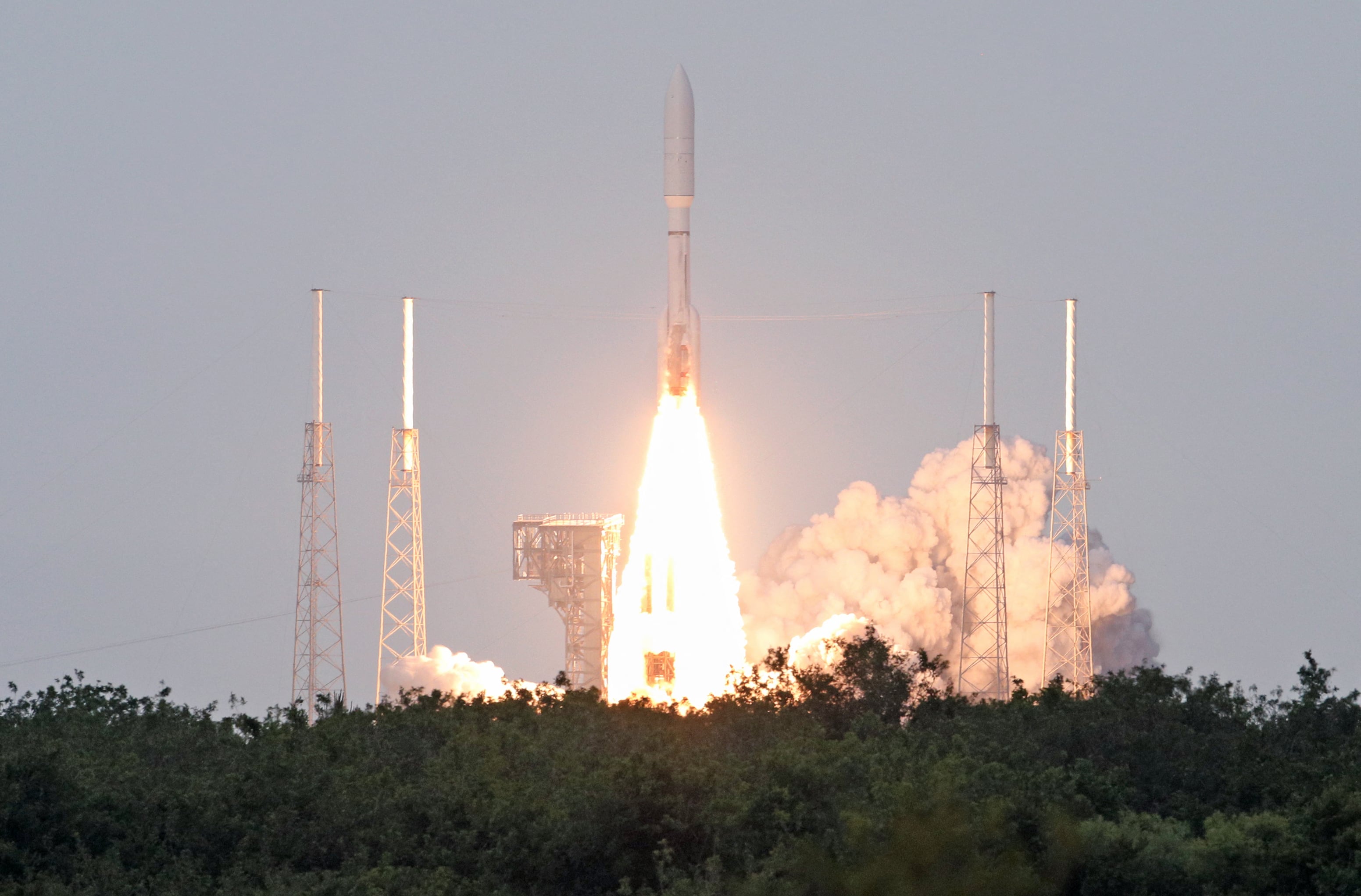In the face of a rising near-peer threat to electronic communications, the Air Force is pressing forward with efforts to develop a new, more resilient, harder-to-jam waveform that soldiers could use on the battlefield.
The service expects to receive responses from industry soon on a recent request for information around protected satellite communications. The request sought industry guidance on how best to implement a new, more resilient protected tactical waveform (PTW), which enables anti-jamming capabilities within protected tactical SATCOM.
“The Air Force is looking to protect our warfighter’s satellite communications against adversarial electronic jamming,” the Air Force’s Space and Missile Systems Center (SMC) said in a written statement to C4ISRNet.
The threat comes from “adversarial electronic jammers that are intended to disrupt and interfere with U.S. satellite communications,” leaders at SMC said. Protected tactical SATCOM is envisioned to provide worldwide, anti-jam communications to tactical warfighters in benign and contested environments.
The quest to solidify satellite communication links has taken on increasing urgency in recent years. As satellite communications has emerged as an integral component in the military’s command and control infrastructure, potential adversaries have stepped up their ability to disrupt such links.
“Tactical satellite communications are vital to worldwide military operations,” the agency noted. “Our adversaries know this and desire to disrupt U.S. satellite communications. The Air Force is fielding Protected Tactical SATCOM capabilities to … ensure warfighters around the globe have access to secure and reliable communications.”
Industry is expected to play a key role in the development and deployment of any new waveform. Officials at SMC said that early prototyping efforts will be conducted through the Space Enterprise Consortium (SpEC), which is managed by Advanced Technology International. SpEC acts as a vehicle to facilitate federally-funded space-related prototype projects with an eye toward increasing flexibility, decreasing cost and shortening the development lifecycle. The organization claims 16 prototype awards to date, with some $26 million in funding awarded.
Understanding the protected tactical waveform
Government documents describe PTW as the centerpiece of the broader protected tactical SATCOM effort, noting that it provides “cost-effective, protected communications over both military and commercial satellites in multiple frequency bands as well as broader protection, more resiliency, more throughput and more efficient utilization of satellite bandwidth.”
A flight test last year at Hansom Air Force Base suggested the emerging tool may soon be ready to deliver on such promises.
While SMC leads the PTW effort, Hanscom is working in collaboration with MIT Lincoln Laboratory and the MITRE Corp. to conduct ground and airborne terminal work.
Researchers from MIT’s Lincoln Laboratory flew a Boeing 707 test aircraft for two and a half hours in order to use the waveform in flight. With a commercial satellite, officials gathered data on the PTW’s ability to operate under realistic flight conditions. “We know this capability is something that would help our warfighters tremendously, as it will not only provide anti-jam communications, but also a low probability of detection and intercept,” Bill Lyons, Advanced Development program manager and PTW lead at Hanscom, said in an Air Force news release.
The test scenario called for the waveform to perform in an aircraft-mounted terminal. Evaluators were looking to see whether its systems and algorithms would function as expected in a highly mobile environment.
“Everything worked and we got the objectives accomplished successfully,” Ken Hetling, Advanced Satcom Systems and Operations associate group leader at Lincoln Laboratory, said in an Air Force press release. “The waveform worked.”
Asking for industry input should help the service to chart its next steps in the development of more protections. While the request does not specify when or how the Air Force intends to move forward, it is clearly a matter not of whether the military will go down this road, but rather when and how.








